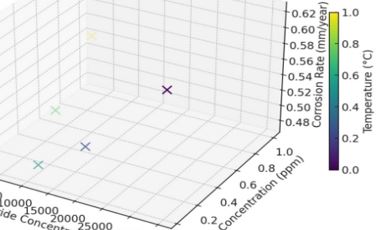Analysis of the Impact of Marine Activities and Industrial Environmental Operations on Steel Structure Corrosion within Onelga, in Rivers State
DOI:
https://doi.org/10.54117/ijet.v1i1.9Keywords:
Corrosion, Marine Environment, Industrial Emissions, Steel Degradation, Protective Coatings, Cathodic ProtectionAbstract
Steel structures in marine and industrial environments are subjected to severe corrosion effect due to exposure to sulphates (SO₂), carbon dioxide (CO₂), chlorides, microbial activity, and industrial pollutants, in addition to unstable environmental conditions. This study investigates the impacts of marine activities, associated gaseous release during industrial operations, and also the effect of these gases on steel structures and the economic implications. An empirical review of previous studies was conducted, and data on corrosion rates from different environmental conditions were sourced and analyzed using statistical modeling. The results highlight the significant role of chloride-induced corrosion, emission of SO₂, and temperature affecting the corrosion rate in the industrial zone of ONELGA in Rivers State. However, it was SO2 that was observed to have the most effect on accelerating the rate of corrosion of the structural steel within the environment. Deterioration of the steel structure was prevalent since SO₂ forms acid and directly attacks the steel. The study concludes that in controlling the corrosion rate of an industrial environment, the reduction in the emission of SO₂ should be prioritized and recommends that for corrosion mitigation strategies, including protective coatings, cathodic protection, and real-time monitoring.

